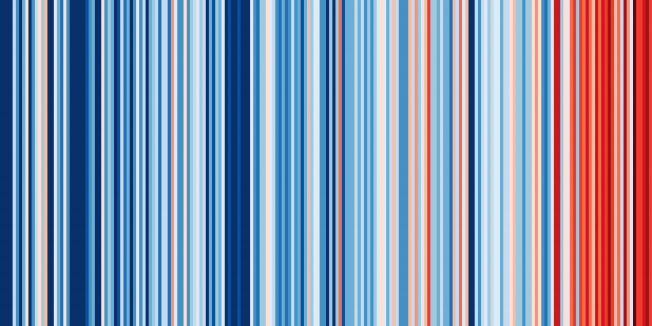Predictability of the early summer surface air temperature over Western South Asia
Climate Dynamics Springer Nature 62:9 (2024) 9361-9375
Abstract:
Variability of the Surface Air Temperature (SAT) over the Western South Asia (WSA) region leads to frequent heatwaves during the early summer (May-June) season. The present study uses the European Centre for Medium-Range Weather Forecast’s fifth-generation seasonal prediction system, SEAS5, from 1981 to 2022 based on April initial conditions (1-month lead) to assess the SAT predictability during early summer season. The goal is to evaluate the SEAS5’s ability to predict the El Niño-Southern Oscillation (ENSO) related interannual variability and predictability of the SAT over WSA, which is mediated through upper-level (200-hPa) geopotential height anomalies. This teleconnection leads to anomalously warm surface conditions over the region during the negative ENSO phase, as observed in the reanalysis and SEAS5. We evaluate SEAS5 prediction skill against two observations and three reanalyses datasets. The SEAS5 SAT prediction skill is higher with high spatial resolution observations and reanalysis datasets compared to the ones with low-resolution. Overall, SEAS5 shows reasonable skill in predicting SAT and its variability over the WSA region. Moreover, the predictability of SAT during La Niña is comparable to El Niño years over the WSA region.Drivers of the ECMWF SEAS5 seasonal forecast for the hot and dry European summer of 2022
Quarterly Journal of the Royal Meteorological Society Wiley (2024)
Abstract:
The European summer (June–August) 2022 was characterised by warm and dry anomalies across much of the continent, likely influenced by a northward-shifted jet stream. These general features were well predicted by European Centre for Medium-Range Weather Forecasts' system 5 seasonal forecast, initialised on May 1. Such successful predictions for European summers are relatively uncommon, particularly for atmospheric circulation. In this study, a set of hindcast experiments is employed to investigate the role that initialisation of the ocean, atmosphere, and land surface played in the 2022 forecast. We find that the trend from external forcing was the strongest contributor to the forecast near-surface temperature anomalies, with atmospheric circulation and land-surface interactions playing a secondary role. On the other hand, atmospheric circulation made a strong contribution to precipitation anomalies. Modelled Euro-Atlantic circulation anomalies in 2022 were consistent with a La Niña-forced teleconnection from the tropical Pacific. However, a northward jet trend in the model hindcasts with increasing greenhouse gas concentrations also contributed to the predicted circulation anomalies in 2022. In contrast, the observed linear trend in the jet over the past four decades was a southward shift, though it is unclear whether this trend was driven by external forcings or natural variability. Nevertheless, this case study demonstrates that important features of at least some European summers are predictable at the seasonal time-scale.Skilful probabilistic medium‐range precipitation and temperature forecasts over Vietnam for the development of a future dengue early warning system
Meteorological Applications Wiley 31:4 (2024) e2222
Abstract:
Dengue fever is a source of substantial health burden in Vietnam. Given the well‐established influence of temperature and precipitation on vector biology and disease transmission, predictions of meteorological variables, such as those issued by ECMWF as a world‐leading provider of global ensemble forecasts, are likely to be valuable model inputs to a future dengue early warning system. In the absence of established verification at municipal and regional scales, this study assesses the skill of rainy season (May–October) ensemble precipitation and 2‐m temperature retrospective forecasts over North and South Vietnam initialized for dates during the period 2001–2020, evaluated against the ERA5 reanalysis for the same period. Forecasts are found to be significantly skilful compared with both climatology and persistence for lead times up to 10 days, including for cumulative precipitation values considered against independent rain gauge data. Rank histograms demonstrate that ensembles generally avoid excessive bias and consistently positive CRPSS values indicate substantial skill for temperature and cumulative precipitation forecasts for all spatial scales considered, despite differences in rainy season characteristics between North and South Vietnam. This forecast reliability demonstrates that meteorological input data based on ECMWF ensemble forecasts would add appreciably more value to the development of a future dengue early warning system compared to reference forecasts like climatology or persistence. These results raise hope for further exploration of predictive skill for relevant meteorological variables, particularly focused on their downscaling to produce district‐level epidemiological forecasts for urban areas where dengue is most prevalent.Understanding the Intermittency of the Wintertime North Atlantic Oscillation and East Atlantic Pattern Seasonal Forecast Skill in the Copernicus C3S Multi‐Model Ensemble
Geophysical Research Letters Wiley Open Access 51:15 (2024) e2024GL108472
Abstract:
The wintertime North Atlantic Oscillation (NAO) and East Atlantic Pattern (EA) are the two leading modes of North Atlantic pressure variability and have a substantial impact on winter weather in Europe. The year‐to‐year contributions to multi‐model seasonal forecast skill in the Copernicus C3S ensemble of seven prediction systems are assessed for the wintertime NAO and EA, and well‐forecast and poorly‐forecast years are identified. Years with high NAO predictability are associated with substantial tropical forcing, generally from the El Niño Southern Oscillation (ENSO), while poor forecasts of the NAO occur when ENSO forcing is weak. Well‐forecast EA winters also generally occurred when there was substantial tropical forcing, although the relationship was less robust than for the NAO. These results support previous findings of the impacts of tropical forcing on the North Atlantic and show this is important from a multi‐model seasonal forecasting perspective.Multi-decadal skill variability in predicting the spatial patterns of ENSO events
Geophysical Research Letters American Geophysical Union 51:12 (2024) e2023GL107971



